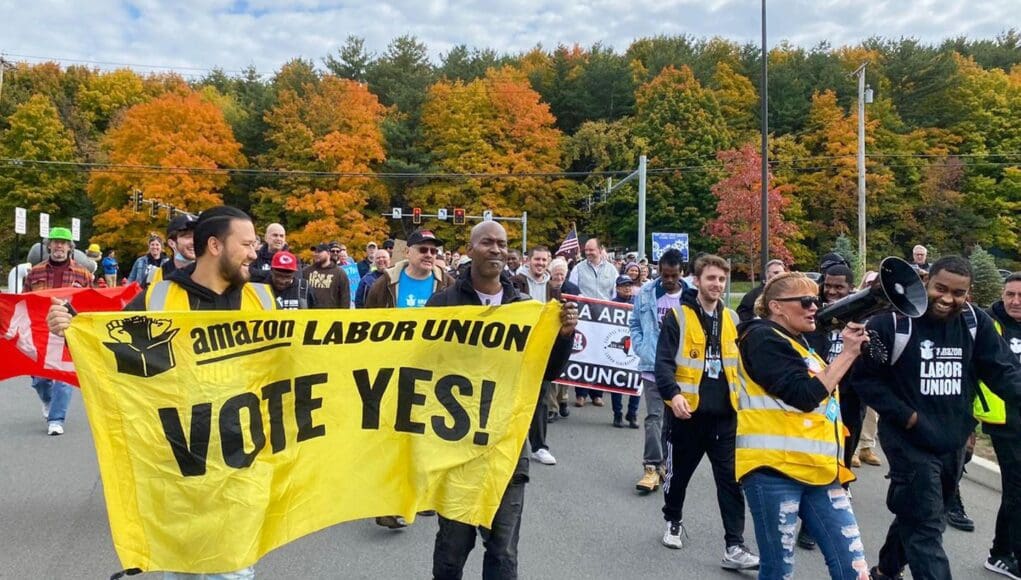[ad_1]

One year after Amazon Labor Union’s historic victory at Staten Island warehouse JFK8, the movement to organize Amazon‘s workers is treading water.
Despite successfully forming a union on April 1 of last year, workers at the Staten Island warehouse are no closer to a contract. The union has called for a $30-an-hour starting wage and 180 hours of paid time off.
Amazon is hostile to ALU and has been reportedly a tough negotiator. However, current and former union members cite internal disagreements over strategy as a big reason workers still have no contract.
Current ALU President Christian Smalls has been accused by union members of ignoring the contract fight in favor of traveling and attempting to start new union drives in other warehouses.
Other organizers say Mr. Smalls is focused more on raising money and creating a permanent press campaign, which they blame for several election losses in neighboring warehouses, including one in Staten Island.
The ALU organized a union election in an Albany warehouse, ALB1, and lost by a roughly 2-to-1 margin. At an ALU board meeting after the election, Albany warehouse organizers told Mr. Smalls that the losses hurt the union’s image.
Heather Goodall, the lead ALU organizer at the Albany warehouse, told the New York Times that her workers received scant support from Mr. Smalls, with infrequent and unpredictable visits.
Mr. Smalls has dismissed criticism from other organizers, painting those who disagree with his strategy as being part of a coup.
He believes that filing for more elections in a shotgun-like strategy can bring more attention to the movement, and waiting for comprehensive support before an election can be tricky due to high turnover rates at warehouses.
A New York Times investigation found turnover for hourly employees at Amazon warehouses is nearly 150% annually.
Other union members think the focus should be on the only ALU union win and shoring up support for a strike to put further pressure on Amazon during contract discussions.
“We’re talking to workers, having one-on-ones, growing our power in the building,” Tristian Martinez, a JFK8 employee told the New York Times. “That’s where it matters. Chris flying all over the world is not going to make us get to a contract any sooner.”
While the prospect of a strike is attractive to organizers, workers may be more inclined to stay on the job in an time of rampant inflation.
Indeed, despite over 70% of U.S. citizens approving of labor unions, membership continues to dwindle.
According to the Bureau of Labor Statistics, just 10.1% of private-sector workers are part of a union in 2022, the lowest amount on record and a dip from 10.3% in 2021.
Soon after ALU won last year’s vote, Amazon filed over two dozen formal objections to the election, which tied up the results in court for months. Despite a federal labor court rejecting Amazon‘s complaints in January, the message was clear: the unionization fight was not over.
Earlier this year, the National Labor Relations Board found that Amazon violated U.S. labor laws in both Staten Island union drives.
According to the agency, Amazon threatened to withhold benefits and raises to pro-union employees and employed its solicitation rules in a discriminatory fashion.
[ad_2]
Source link




























